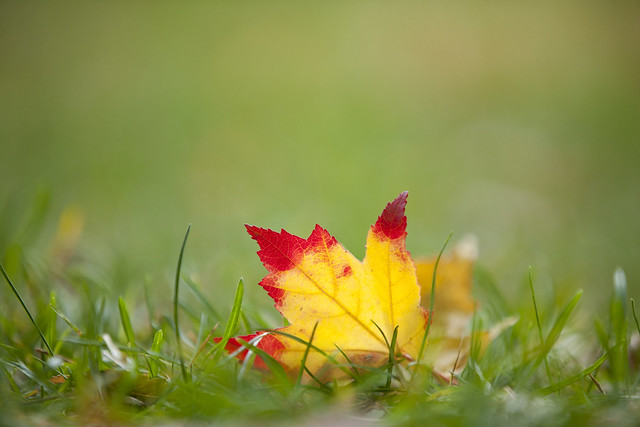

We talk about pigments and shorter, cooler days when we discuss the seasonal change. During the fall, chlorophyll, the main player in spring and summer (the substance that makes the leaves nice and green), takes back stage to yellow carotenoids and red anthocyanins.
Leaves are in the business of making food. They take water from the ground (through their roots), carbon dioxide from the air and with the energy from the sun, they create glucose (a sugar). Chrolophyll facilitates this process called photosynthesis which manufactures the sugars (food) for the tree.
As days get shorter the trees start preparing for winter. Many plants stop making food in the fall and begin to shut down for the winter. As the production of chlorophyll slows down, other colors in the leaves come to the fore. Yellow pigments that have always existed in the leaf become more prominent. You will notice that yellow pigments tend to stay the same year after year, while reds and purples vary in their intensity and depend on seasonal factors. Why is this?
Red and violet pigments are formed when sugars become trapped in the leaves. During sunny days sugars are produced in the leaves. In the cool fall nights, the veins in the leaves close up and prevent the sugars from moving into the tree. This excess of sugar encourages the production of anthocyanins.
What then is the recipe for good fall color? In the spring there needs to be plenty of precipitation for the formation of big healthy leaves; in the fall bright, sunny days and cool nights.

Most woody plants and herbaceous perennials go dormant during the winter time. (Evergreens slow down, but do not go dormant.) Autumn is the time when many plants shed their leaves and shut down for the season. Leaves become damaged over time from weather, insects and disease - this seasonal cycle is an important part of the plant's maintenance and rejuvenation process.
As the leaves fall to the ground they decay, and are incorporated into the soil as organic matter. Insects, bacteria and fungi that help break down the organic matter depend on leaves for food and shelter. Nutrients go back into the soil to be reused by further generations of trees. This process is an important part of the forest's ecosystem. Nature teaches us how to recycle. The autumn display is a wonderful celebration and a vibrant announcement of this process.